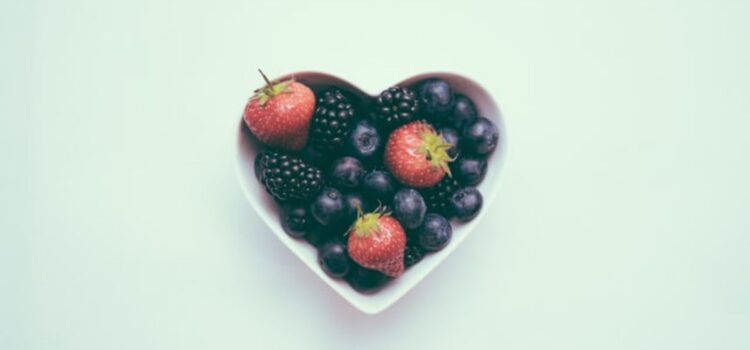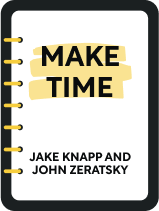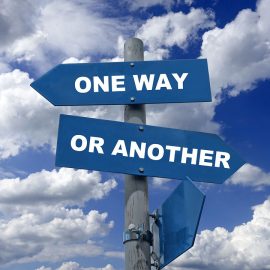

This article is an excerpt from the Shortform book guide to "Make Time" by Jake Knapp and John Zeratsky. Shortform has the world's best summaries and analyses of books you should be reading.
Like this article? Sign up for a free trial here .
Do you need self-improvement tips? Are you wondering how to maintain a healthy lifestyle?
In Make Time, Jake Knapp and John Zeratsky give guidelines about how to make realistic changes to your level of activity and the kind of food you eat. By doing this, you can live a healthier lifestyle where you can stay focused and energized.
Keep reading to learn the secret to maintaining a healthy lifestyle.
1. Move Around
Knapp and Zeratsky reject the idea of grueling, exhausting workout routines. Instead, they argue that you can benefit from a mere 20 minutes of exercise per day. Walking is perfect—it helps warm up your mind, and you don’t even have to add it to your to-do list. You can find opportunities that are already there and it easily contributes to maintaining a healthy lifestyle. You can walk at least part of the way to your job, choose to take the stairs over the elevator, or simply park farther away from the grocery store when you’re shopping.
(Shortform note: The Harvard Medical School cites research that walking for as little as 20 minutes each day can reduce your risk of heart disease and obesity and could collectively save Americans over $100 billion per year in health care. For those who aren’t used to getting out and walking, the Mayo Clinic provides a 12-week schedule to slowly increase your exercise duration.)
You may already have your own workout routine, but perhaps you find it hard to squeeze an hour-long workout at the gym into your schedule. In this case, time may not be as much of a barrier as you think. The authors point to research that shows that short, high-intensity workouts are very beneficial as well.
2. Eat Smart
It’s been well established that making healthier food choices helps you maintain a healthy lifestyle than relying on sugar, processed foods, and caffeine. However, Knapp and Zeratsky admit that diets are disheartening, difficult, and hard to stick to. Plus, among the deluge of different diet crazes, it’s hard to keep up with what’s healthy and what isn’t.
The authors recommend following the most basic nutritional common sense: eat non-processed food, in reasonable amounts, at appropriate times. They suggest choosing mostly fruits and vegetables, and planning your meals with a salad as the main feature. When you snack, eat fruits and nuts instead of processed sugar, and only when you’re hungry—not when you’re bored.
3. Caffeinate Wisely
A lot of us rely on coffee, tea, or caffeinated soda as a pick-me-up to get us through the day. There’s a catch to caffeine, though—it doesn’t really give you energy. The authors point out that what caffeine actually does is block the chemical adenosine from reaching the receptors in your brain. Your body’s buildup of adenosine throughout the day is what makes you drowsy, so by blocking it, caffeine merely makes you not feel sleepy. To maintain a healthy lifestyle, you need to be conscious about your caffeine intake.
The authors don’t suggest giving up caffeine, but they do recommend using it strategically. If you’ve scheduled your Focus for the morning or midday, you can time your caffeine intake so it goes into effect right as you’re getting into the swing.
Contrary to common belief, it does no good to take caffeine early in the morning. Your body has metabolized its adenosine overnight, so when you wake up, there’s none left for the caffeine to block. Instead, the authors recommend having your first cup around 10:00 a.m.
Because caffeine takes hours to flush out of your system, your final cup should probably be around 2 p.m. Any caffeine taken later in the day will interfere with your sleep, leaving you groggy in the morning. Everyone’s body processes caffeine differently, so you may have to experiment to determine when you should have your first and last cup.
One trick the authors propose is taking a “caffeine nap” to boost energy and concentration. The idea is to drink a cup of coffee or tea, then nap for 15 minutes. It takes that long for the caffeine to be absorbed, while the nap helps clear adenosine out of your system.

———End of Preview———
Like what you just read? Read the rest of the world's best book summary and analysis of Jake Knapp and John Zeratsky's "Make Time" at Shortform .
Here's what you'll find in our full Make Time summary :
- How the current landscape is designed to steal your time and attention
- How to be proactive to take back your time
- Why we were all better off as hunter-gatherers






